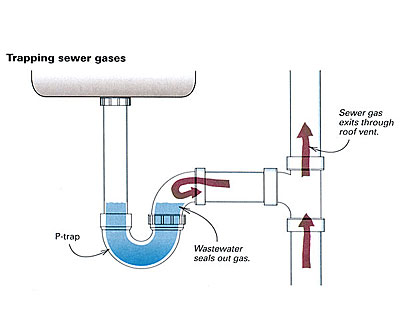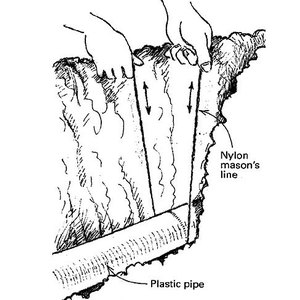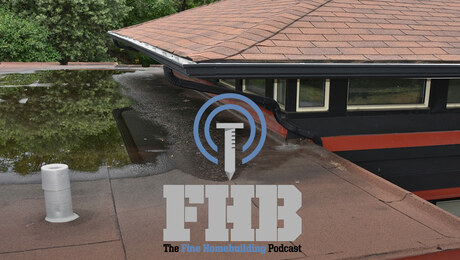Q:
A customer called me recently to help him locate the source of an intermittent sewer smell in his home. The smell came from his powder room after the toilet was flushed. Sometimes the smell would leave for weeks at a time, but usually it took just one or two flushes to fill up the room with the smell. We tried smoke-testing the vent lines, replacing the old galvanized supply lines, replacing the toilet and checking the sewer line outside the house. When we removed the toilet, we capped the closet flange, and the smell moved to the kitchen, where it appeared after the dishwasher was run. We’ve consulted four plumbers and a priest, and the smell is still there. Can you help?
Doug Dalton, Los Angeles, CA
A:
Peter Hemp, author of Plumbing a House , replies: I think you should have consulted four priests and one plumber—I’ve come up against rogue aromas before, and in each case blossoming bacteria have been the villain. And in each case the home had been continuously occupied. Because you mentioned replacing the galvanized lines, your customer’s home was probably older, but I’m guessing that the building drain and sewer lines are probably original.
By their nature, most drainage systems stink, but a properly sized and properly installed vent system is supposed to convey odors through the roof to the outside before we can detect them inside. Testing the vent lines unfortunately will not tell if a vent has been installed correctly, using the right fittings in the proper positions.
Each plumbing fixture has a trap seal that is supposed to prevent sewer gases from entering the house. In each case, whether it’s the trap built into a toilet or the P-trap under a kitchen or lavatory sink, water in the trap seals the drain to keep odors out of the building.
Most code jurisdictions today require that a dishwasher drain into an air-gap device on the sink or in the countertop and from there into the kitchen-sink drain. The air gap keeps the dishwasher from siphoning wastewater back into the dishwasher. If the dishwasher drains into its own P-trap and is used only occasionally, water in the trap can evaporate to the point where the trap is no longer sealed, and odors can exit through the drain opening inside the dishwasher.
Another possible source of bad odors is a faulty or improperly installed wax or rubber seal under a toilet. A bathroom sink that is equipped with an overflow chamber is yet another place odors can develop. These chambers are flooded only occasionally but are kept warm from water in the sink, which makes them an ideal breeding place for odor-producing bacteria.
Moisture and temperature are two factors that can stimulate growth of the offending bacteria. When the seasons change from mild to cold in colder climates, bacteria usually take a rest until the weather warms up again. But appliances that discharge warm water such as dishwashers can keep malodorous bacteria active in drain lines even when Jack Frost is about.
The fact that the smell migrated to the dishwasher after the toilet flange was capped reinforces my belief that the problem is in the building drain rather than in the fixtures themselves. I have two suggestions to rid the drain lines of smelly bacteria. First, turn the temperature setting on the household water heater to its highest setting. Then pour a half-dozen 16-oz. bottles of hydrogen peroxide into an empty dishwasher, punch the rinse/hold button and let the appliance run. Afterward, reset the water heater to its normal setting so that no one will be scalded.
The next suggestion is to pour four bottles of hydrogen peroxide into the toilet tank and flush the toilet just before going to bed. Try not to use the toilet all night to leave as much of the peroxide in the building drain for as long as possible. The peroxide, which is inexpensive and harmless to Homo sapiens when used in this manner, should wipe out the odor-causing bacteria. And if the problem returns, call a rabbi.

























